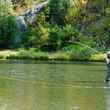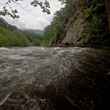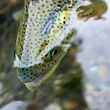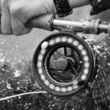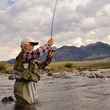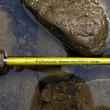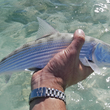Wild fish advocates all over the country and world have, for many years, been arguing that stocking hatchery fish in waters where wild fish populations exist poses a threat to those wild fish. As of yesterday, it appears as though the courts in the state of Oregon agree.
Via a ruling by District Court Judge Ancer Haggerty, the court sided with the the Native Fish Society and the McKenzie Flyfishers which claimed that hatchery operations on Oregon's Sandy River were harmful to the Sandy's wild steelhead and salmon, resulting in the defendants -- the Oregon Department of Fish and Wildlife and the National Marine Fisheries Service -- being in violation of both the Endangered Species Act and the National Environmental Policy Act.
Mike Moody, director of the Native Fish Society, noted in a statement released yesterday that "the science is irrefutable. The law is irrefutable. And, Judge Haggerty affirmed this. This is the most significant decision benefiting wild fish in Oregon in over a decade." Moody quoted Haggerty's ruling, which stated that "it is undisputed that hatchery operations can pose a host of risks to wild fish… it is clear that the Sandy River Basin is of particular importance to the recovery of the four [Endangered Species Act] listed species and is an ecologically critical area.”



